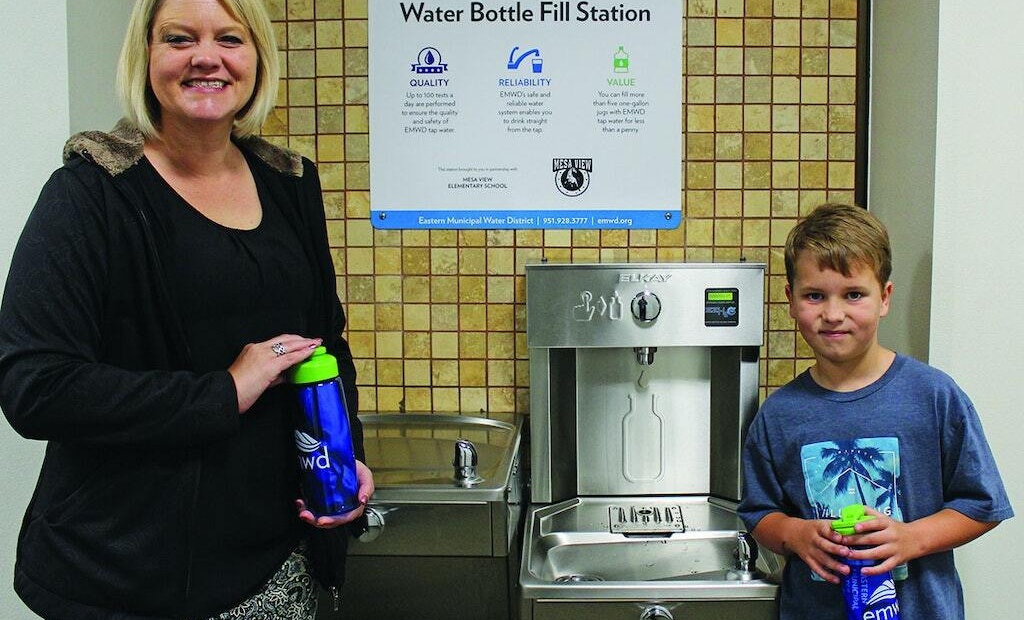
Students and staff at schools can stay hydrated with cold tap water from newly installed water bottle filling stations like this one provided by Eastern Municipal Water District. The stations help reduce usage of plastic throwaway water bottles.
Eastern Municipal Water District created water bottle fill stations for its schools and community gathering places to promote its tap water.
The staff, with support from the board of directors for the utility in Perris, California, came up with the idea in 2014 because some...





